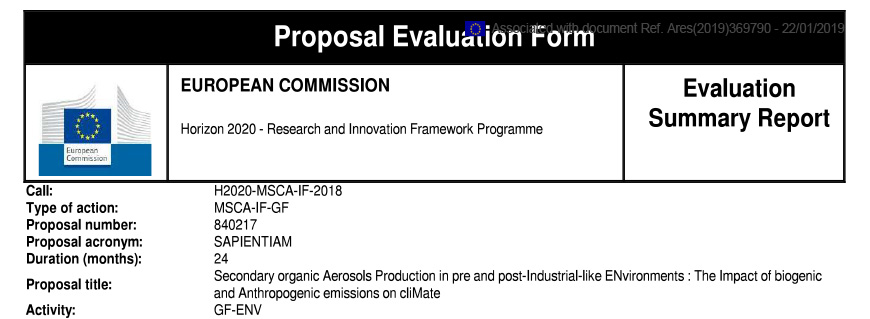The SAPIENTIAM project (Secondary organic Aerosols Production in the pre and post-Industrial-like Environments: The Impact of biogenic and Anthropogenic emissions on cliMate), of which Prof. Piero Di Carlo is the project manager for the University of G.D'Annunzio of Chieti-Pescara in partnership with the University of Harvard, has been approved by the European community and will be financed under Horizon 2020 - Research and Innovation Framework Program.
Anthropogenic emissions (i.e. particles and trace gases) are constantly rising since the industrialization inducing wide changes on the climate of the Earth system, on local degradation of air quality and impact. Anthropogenic emissions (i.e. particles and trace gases) are constantly rising since the industrialization inducing wide changes on the climate of the Earth system, on local degradation of air quality and impacting human health. The aim of the SAPIENTIAM project is to identify new mechanisms that allow to describe the preindustrial atmospheric status and its change as consequence of the human activities emission related to industrialization. Secondary organic particles are produced in the atmosphere by the reactions of biogenic volatile organic compounds in presence of nitrogen oxides (NOx) and sulfate (SO2). One of the main uncertainties of the role of particles on the changes of climate and air quality, is related to the impact of anthropogenic emissions on their concentrations and properties.
In order to define new mechanisms of atmospheric particle formation in pre-industrial and post-industrial conditions, a laboratory experiment will be carried out at the Harvard Environmental Chamber (outgoing phase). In detail, the pristine pre-industrial-like environment’s atmosphere will be simulated in the chamber considering first only the biogenic emissions and, then, adding the contribution of anthropogenic emissions such as NOx and SO2. Recent studies highlighted the important role played by the ocean as potential source of atmospheric particle, but field observations to confirm this hypothesis are quite rare. Another aim of this project is to verify the results obtained by the laboratory experiments in a field campaign in marine environment representing an innovative post-industrial-like site, where the interaction between biogenic and anthropogenic emissions are poorly explored (return phase at the University of Chieti-Pescara, Ud'A).



